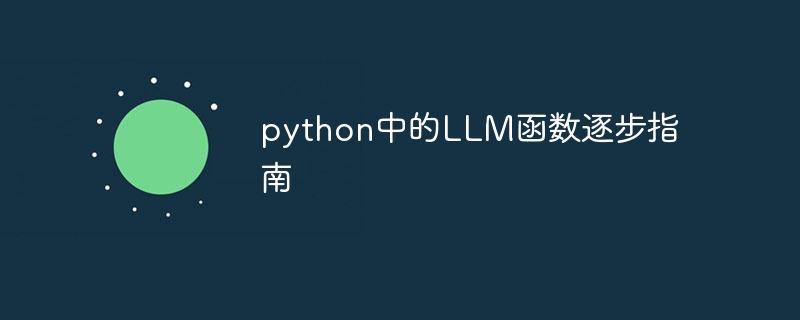
本指南将指导您如何使用 Python 和 Claude 实现函数调用,并提供示例和最佳实践。通过函数调用,Claude 可以以结构化的方式与外部函数和交互。
先决条件
开始之前,您需要:
- Python 3.7 或更高版本
- anthropic Python 包
- Anthropic 提供的有效 API 密钥
基本设置
立即学习“”;
from anthropic import Anthropic import json # 初始化客户端 anthropic = Anthropic(api_key='your-api-key')
登录后复制
定义函数
以下代码定义了一个名为 get_weather 的函数,该函数获取特定位置的当前天气信息:
function_schema = { "name": "get_weather", "description": "获取特定位置的当前天气信息", "parameters": { "type": "object", "properties": { "location": { "type": "string", "description": "城市名称或坐标" }, "unit": { "type": "string", "enum": ["celsius", "fahrenheit"], "description": "温度单位" } }, "required": ["location"] } }
登录后复制
进行函数调用
以下代码演示了如何进行函数调用:
def get_weather(location, unit="celsius"): # 这是一个模拟实现,您可以调用您的 API return { "location": location, "temperature": 22 if unit == "celsius" else 72, "conditions": "晴朗" } def process_function_call(message): try: # 解析函数调用参数 params = json.loads(message.content) # 调用相应的函数 if message.name == "get_weather": result = get_weather(**params) return json.dumps(result) else: raise ValueError(f"未知函数:{message.name}") except Exception as e: return json.dumps({"error": str(e)}) # 使用函数调用的示例对话 messages = [ { "role": "user", "content": "巴黎的天气怎么样?" } ] while True: response = anthropic.messages.create( model="claude-3-5-haiku-latest", messages=messages, tools=[function_schema] ) # 检查 Claude 是否要调用函数 if response.tool_calls: for tool_call in response.tool_calls: # 执行函数 result = process_function_call(tool_call) # 将函数结果添加到对话中 messages.append({ "role": "tool", "tool_call_id": tool_call.id, "name": tool_call.name, "content": result }) else: # 普通响应 - 打印并中断 print(response.content) break
登录后复制
最佳实践
- 清晰的函数说明: 为您的函数编写详细的说明,指定参数类型和约束,并在说明中包含示例。
- 输入验证: 在处理之前验证所有函数输入,并返回有意义的错误消息。优雅地处理边缘情况。
- 响应格式: 返回一致的 JSON 结构,并在响应中包含状态指标。以一致的方式格式化错误消息。
- 安全考虑: 验证和清理所有输入,必要时实施速率限制。使用适当的身份验证,不要在函数说明中公开敏感信息。
结论
使用 Claude 进行函数调用可以在语言模型和外部工具之间实现强大的集成。通过遵循这些最佳实践并实现适当的错误处理,您可以创建强大且可靠的函数调用实现。
以上就是中的LLM函数逐步指南的详细内容,更多请关注php中文网其它相关文章!
 微信扫一扫打赏
微信扫一扫打赏
 支付宝扫一扫打赏
支付宝扫一扫打赏

